
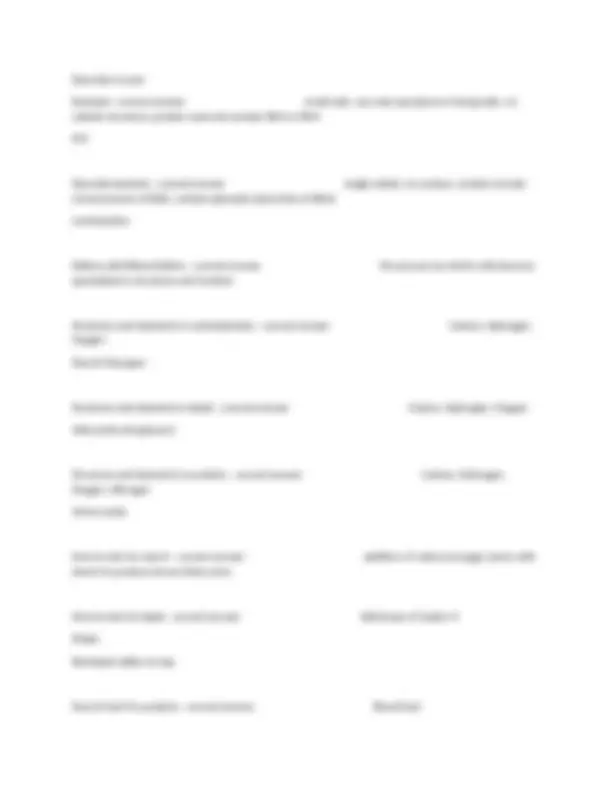
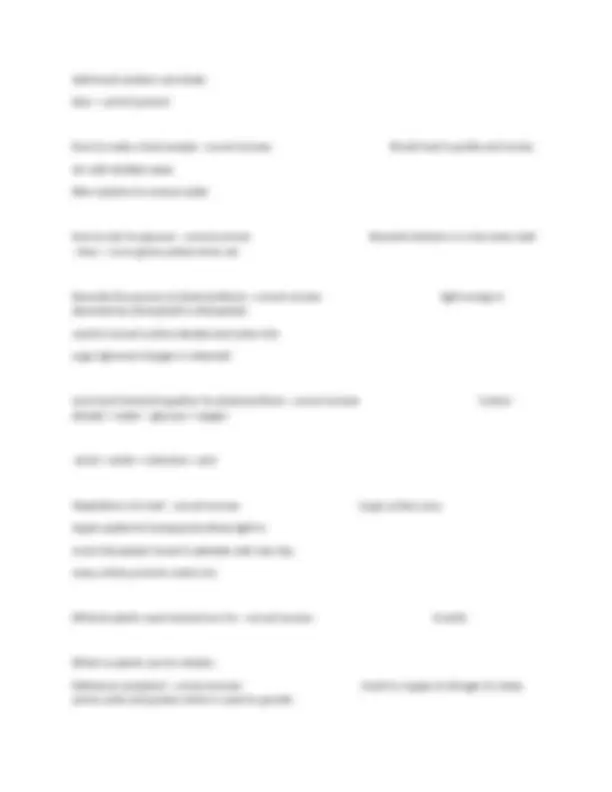
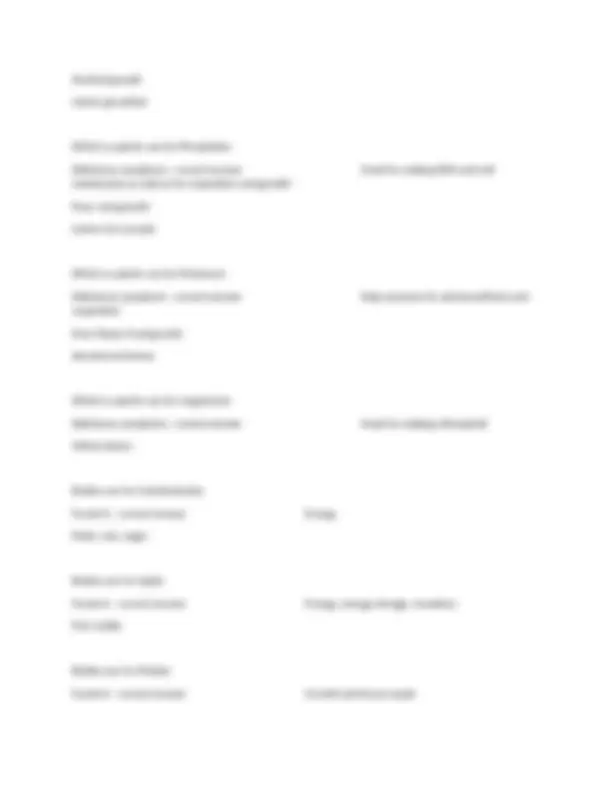
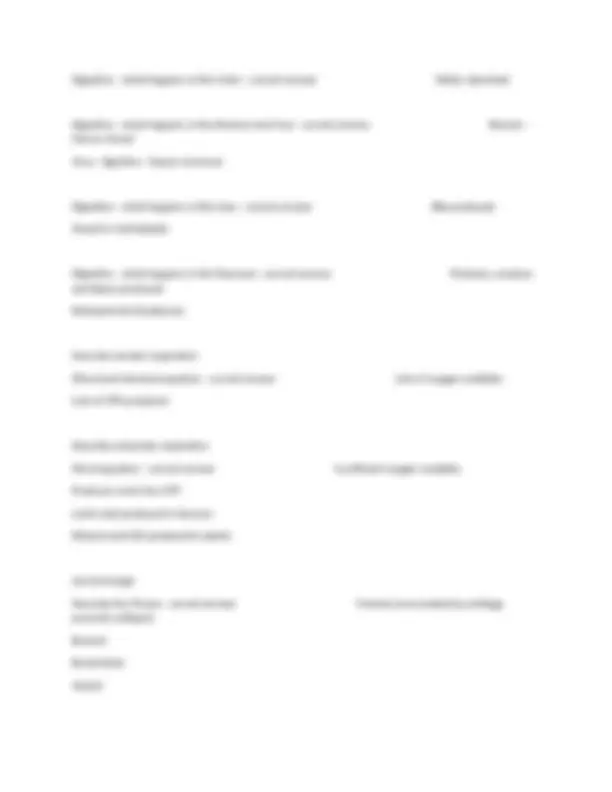
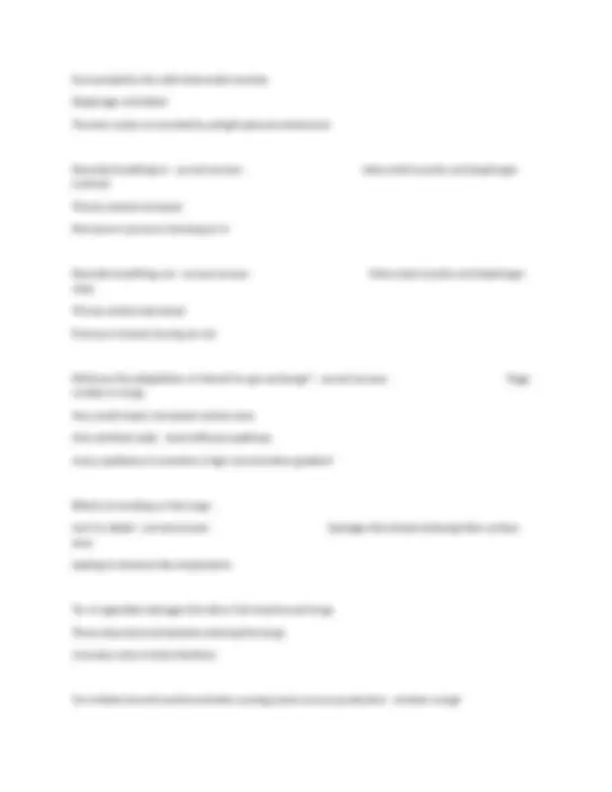
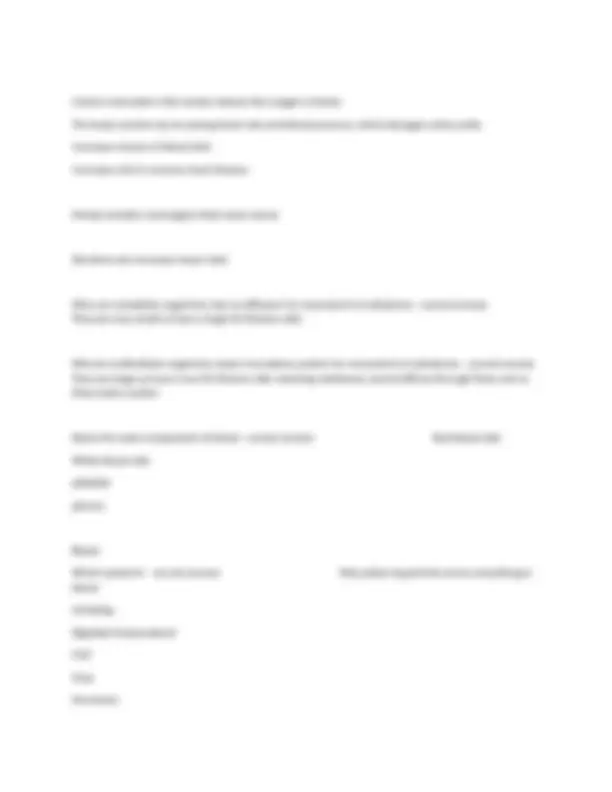

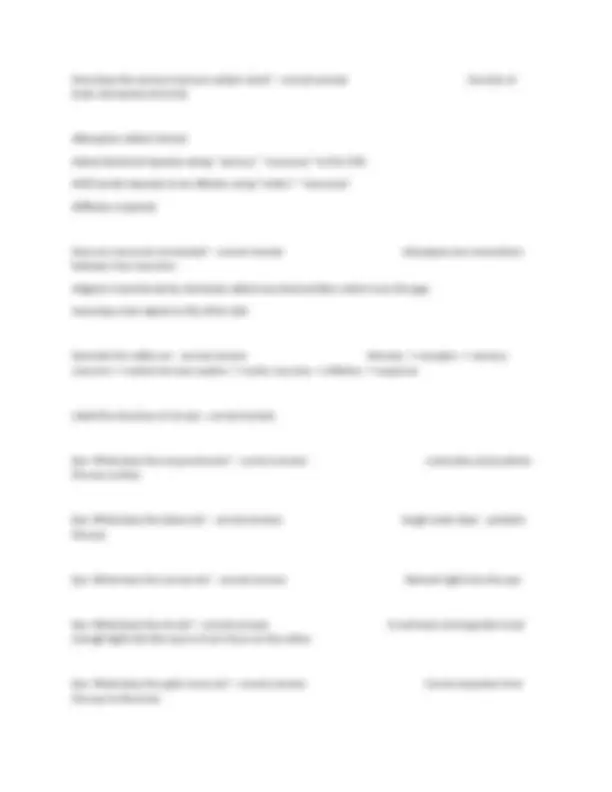
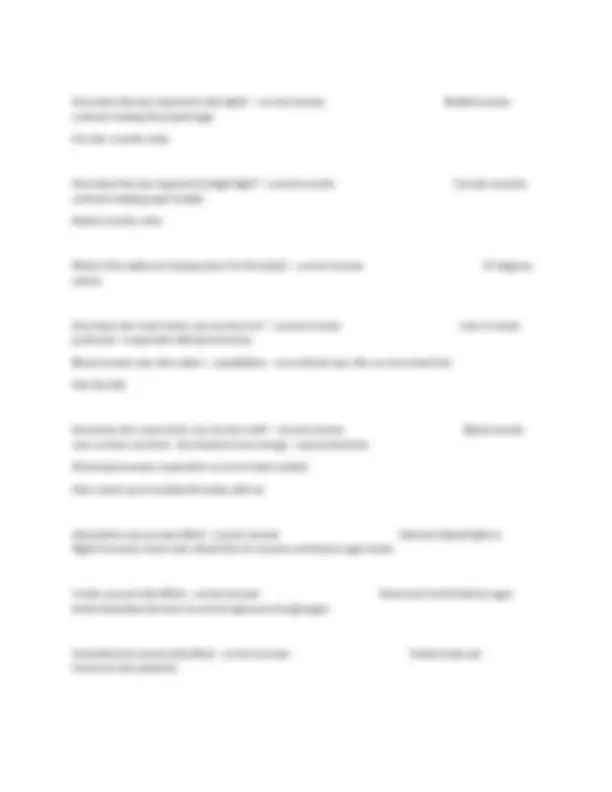

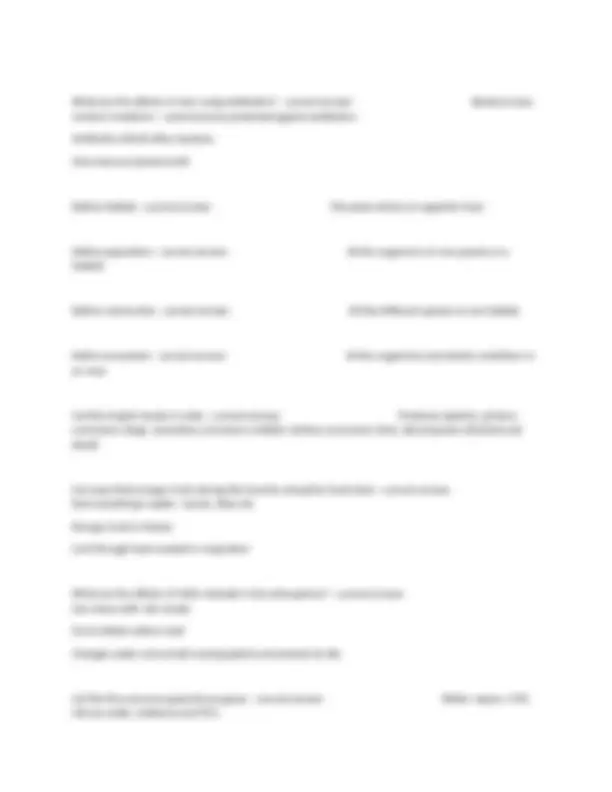
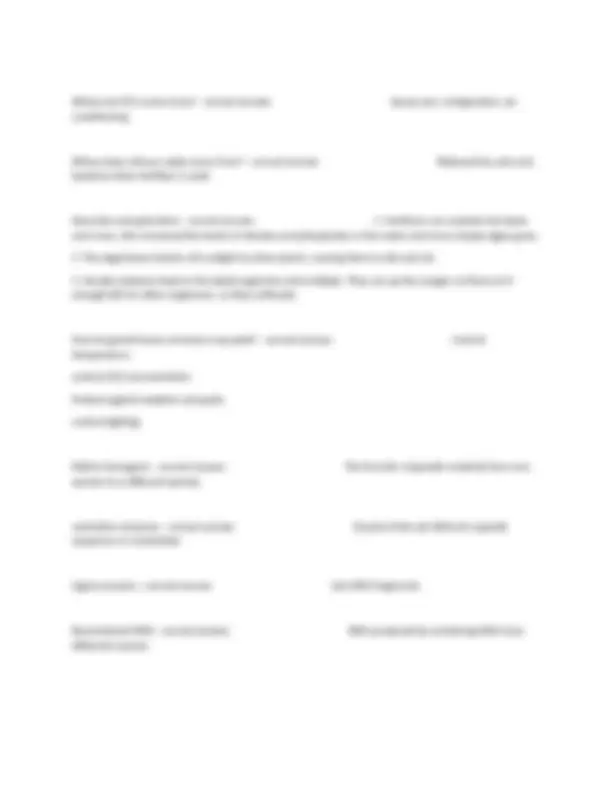


Study with the several resources on Docsity

Earn points by helping other students or get them with a premium plan


Prepare for your exams
Study with the several resources on Docsity

Earn points to download
Earn points by helping other students or get them with a premium plan
Community
Ask the community for help and clear up your study doubts
Discover the best universities in your country according to Docsity users
Free resources
Download our free guides on studying techniques, anxiety management strategies, and thesis advice from Docsity tutors
Edexcel IGCSE Biology Paper 1 Actual Questions And Answers.
Typology: Exams
1 / 20

This page cannot be seen from the preview
Don't miss anything!













What are the characteristics of living things? - correct answer Move, respire, sensitivity, grow, respire, excrete, nutrition, control Describe eukaryotic cells Example - correct answer Complex large cell Contain Nucleus Any mammal/insect cell Describe prokaryotic cells Example - correct answer Small simple cell No nucleus Floating DNA Amoeba/Chlorella Animal cell: Structure Carbohydrate store Example - correct answer Multicellular Contain: No cell wall Store carbs as Glycogen Any mammal/insect Plant cell: Structure Carbohydrate store Example - correct answer Cell wall, vacuole, chloroplasts
Store carbs as starch or sucrose Beans/maize Fungi: Structure Feeding method Store carbohydrates Example - correct answer Body called mycelium made up of hyphae (thread like structures) Cell walls made of chitin Saprotrophic nutrition - release enzymes into surroundings to dissolve food Store carbs as glycogen Yeast Describe the levels of organization - correct answer Organelle, cell, tissue, organ, organ system What is the function of the mitochondria? - correct answer cellular respiration for energy function of ribosomes - correct answer protein synthesis function of chloroplast - correct answer Contains chlorophyll which absorbs light energy for photosynthesis function of vacuole - correct answer Stores water, salts, proteins and carbs and provides structure Define pathogen - correct answer disease causing organism
Add biuret solution and shake blue -> pink if present How to make a food sample - correct answer Break food in pestle and mortar stir with distilled water filter solution to remove solids How to test for glucose - correct answer Benedict Solution in a hot water bath
Stunted growth Leaves go yellow What is a plants use for Phosphates Deficiency symptoms - correct answer Used for making DNA and cell membranes as well as for respiration and growth Poor root growth Leaves turn purple What is a plants use for Potassium Deficiency symptoms - correct answer Help enzymes for photosynthesis and respiration Poor flower/fruit growth discoloured leaves What is a plants use for magnesium Deficiency symptoms - correct answer Used for making chlorophyll Yellow leaves Bodies use for Carbohydrates Found in - correct answer Energy Pasta, rice, sugar Bodies use for Lipids Found in - correct answer Energy, energy storage, insulation Fish, butter Bodies use for Protein Found in - correct answer Growth and tissue repair
Anus Digestion - what happens in the mouth - correct answer Mastication - more surface area for enzymes Amylase in saliva breaks starch into maltose Digestion - what happens in the oesophagus - correct answer Peristalsis - circular muscle contraction moves boluses of food down Digestion - what happens in the Stomach - correct answer Mechanical digestion - churning food Hydrochloric acid kills bacteria Pepsin breaks protein down into amino-acids Digestion - what happens in the Duodenum - correct answer Pancreatic juice added - protease/trypsin - protein
Digestion - what happens in the Colon - correct answer Water absorbed Digestion - what happens in the Rectum and Anus - correct answer Rectum - Faeces stored Anus - Egestion - Faeces removed Digestion - what happens in the Liver - correct answer Bile produced Stored in Gall bladder Digestion - what happens in the Pancreas - correct answer Protease, amylase and lipase produced Released into Duodenum Describe aerobic respiration Word and chemical equation - correct answer Lots of oxygen available Lots of ATP produced Describe anaerobic respiration Word equation - correct answer Insufficient oxygen available Produces much less ATP Lactic acid produced in Humans Ethanol and C02 produced in plants Gas Exchange: Describe the Thorax - correct answer Trachea (surrounded by cartilage prevents collapse) Bronchi Bronchioles Alveoli
Carbon monoxide in the smoke reduces the oxygen in blood The body counters by increasing heart rate and blood pressure, which damages artery walls. Increases chance of blood clots Increases risk of coronary heart disease Smoke contains carcinogens that cause cancer (Nicotine also increases heart rate) Why can unicellular organisms rely on diffusion for movement of substances - correct answer They are very small so have a large SA:Volume ratio Why do multicellular organisms need a circulatory system for movement of substances - correct answer They are large so have a low SA:Volume ratio meaning substances cannot diffuse through them and so they need a system Name the main components of blood - correct answer Red blood cells White blood cells platelets plasma Blood: What is plasma? - correct answer Pale yellow liquid that carries everything in blood including: Digested food products CO Urea Hormones
List 3 adaptations of red blood cells - correct answer Biconcave shape - high surface area for absorbing oxygen Contains haemoglobin which contains Iron allows blood to carry oxygen No nucleus creates space for more haemoglobin Describe how the immune system works including descriptions of the two types of white blood cell. - correct answer Phagocytes - detect foreign things Digest the object using enzymes Non-specific - destroy everything foreign Lymphocytes - Find foreign antigens (attached to pathogens) Produce antibodies that are specific to the antigen antibodies attach to the pathogen and mark them to be destroyed Memory cells remember a specific antigen and can produce antibodies very quickly if the pathogen enters the body ever again. How does exercise affect heart rate? - correct answer During exercise muscles contract more So need more energy So the body respires more More CO2 produced Receptors in aorta detect increased CO2 - signal brain so heart pumps faster to increase blood flow to remove it
Very small lumen Describe a vein - correct answer Culmination of capillaries carry blood to the heart Low pressure - valves prevent blood changing direction Large lumen What does Pulmonary mean? - correct answer To do with the lungs What does Hepatic mean? - correct answer To do with the liver What does Renal mean? - correct answer To do with the kidneys How does the body respond to the environment? - correct answer Receptors in sense organs (eyes, ears etc) detect stimuli Effectors (muscle, glands etc) communicate with the receptors by the nervous system or hormonal system Define homeostasis - correct answer Maintaining a stable internal environment (including water content and body temperature) What is geotropism? - correct answer a plant's response to gravity What is phototropism? - correct answer A plant's response to light When a shoot is exposed to light, where does the auxin go? - correct answer To the shade which increases growth on that side bending the shoot towards the light.
How does the sensory nervous system work? - correct answer Consists of brain and spinal cord only •Receptors detect stimuli •Send electrical impulses along sensory neurones to the CNS •CNS sends impulses to an effector using motor neurones •Effector responds How are neurones connected? - correct answer •Synapses are connections between two neurones •Signal is transferred by chemicals called neurotransmitters which cross the gap •causing a new signal on the other side Describe the reflex arc - correct answer stimulus → receptor → sensory neurone → central nervous system → motor neurone → effector → response Label the structure of an eye - correct answer Eye: What does the conjunctiva do? - correct answer Lubricates and protects the eye surface Eye: What does the Sclera do? - correct answer tough outer layer - protects the eye Eye: What does the cornea do? - correct answer Refracts light into the eye Eye: What does the iris do? - correct answer it contracts and expands to let enough light into the eye so it can focus on the retina Eye: What does the optic nerve do? - correct answer Carries impulses from the eye to the brain
Progesterone source/role/effect - correct answer Ovaries/Supports pregnancy/Maintains the lining of the uterus Oestrogen source/role/effect - correct answer Ovaries/female sex hormone/controls menstrual cycle and (see puberty) What is asexual reproduction? - correct answer The production of genetically identical offspring from a single parent What is sexual reproduction? - correct answer Reproduction involving fusion of a male and a female gamete to create diverse offspring. Define mitosis - correct answer cell splits to form two cells with identical sets of chromosomes Describe the process of fertilisation - correct answer Fusion of male and female gamete Produces a zygote Zygote undergoes cell division Becomes an embryo What is the male reproductive part of a plant? And what does it consist of? - correct answer Stamen Consists of Anther and Filament What is the female reproductive part of a plant? And what does it consist of? - correct answer Carpel Consists of Ovary, Style and Carpel Describe plant fertilisation - correct answer The pollen grain gets stuck on the stigma
A pollen tube grows down the style into the ovary The pollen nucleus travels down the tube The two nuclei of the ovule and pollen fuse Describe seed germination - correct answer The seed gets glucose for respiration from its food store This provides the energy it needs to grow before it can photosynthesise What conditions are needed for seed germination? - correct answer Water: Activates enzymes that break down the food in the seed Oxygen: For respiration for growth Optimum temperature: Allows the enzymes to work List two ways plants can reproduce asexually - correct answer Runners - stems that grow sideways Artificial method using cuttings What is the role of the placenta? - correct answer Gets baby and mother's blood very close to allow for the transfer of food, oxygen and waste What is the role of amniotic fluid? - correct answer Protects the foetus from knocks and bumps What is a genome? - correct answer All the DNA in one cell of an organism What is a gene? - correct answer segment of DNA that codes for a protein
What are the effects of over using antibiotics? - correct answer Bacteria have random mutations - some become protected against antibiotics Antibiotics kill all other bacteria Only immune bacteria left Define habitat - correct answer The place where an organism lives Define population - correct answer All the organisms of one species in a habitat Define community - correct answer All the different species in one habitat Define ecosystem - correct answer All the organisms and abiotic conditions in an area List the trophic levels in order - correct answer Producer (plants), primary consumers (bug), secondary consumers (rabbit), tertiary consumers (fox), decomposers (bacteria eat dead) List ways that energy is lost during the transfer along the food chain - correct answer Not everything is eaten - bones, fibre etc Energy is lost in faeces Lost through heat created in respiration What are the effects of Sulfur dioxide in the atmosphere? - correct answer Gas mixes with rain clouds Forms dilute sulfuric acid Changes water and soil pH causing plants and animals to die List the five common greenhouse gases - correct answer Water vapour, CO2, nitrous oxide, methane and CFCs
Where do CFCs come from? - correct answer Spray cans, refrigeration, air conditioning Where does nitrous oxide come from? - correct answer Released by soils and bacteria when fertiliser is used Describe eutrophication - correct answer 1. Fertilisers are washed into lakes and rivers, this increased the levels of nitrates and phosphates in the water and more simple algae grow.